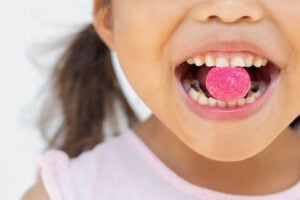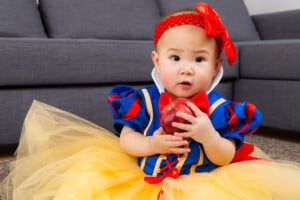Marijuana is one of the most commonly used substances during pregnancy in the United States.1 But is this substance actually safe to use during pregnancy and breastfeeding? The American Academy of Pediatrics (AAP) has published a study about the effects of marijuana on babies. In this article, we’ll explore the findings from this study, discuss why expecting moms might use marijuana, and share the potential effects it can have on a baby.
Who Uses Marijuana During Pregnancy?
With an increase in the legalization of marijuana in many states, some pregnant moms are turning to the drug for relief of nausea associated with early pregnancy. Statistics vary significantly among moms’ socioeconomic statuses, geography, and age. But the AAP reports that up to 4.9% of women admit to some form of marijuana use during pregnancy.1,9
The highest use rates are between the ages of 18 and 25. The highest concentration of marijuana users among pregnant moms in one state appears to be Vermont, with 9.4% reporting marijuana use. Tobacco use, on the other hand, is down during pregnancy, with reported rates of tobacco use during pregnancy decreasing from 19.9% to 13.4% and to 12.8% in the first, second, and third trimesters, respectively. Whereas moms who typically use cocaine, ecstasy, or other stimulants usually stop using them by the second trimester, 48% to 60% of marijuana users report using marijuana throughout the entire pregnancy.1,8
Why Do Moms Use Marijuana During Pregnancy?
The AAP reports that the internet touts marijuana as a safe means of reducing nausea during pregnancy, leading its use during pregnancy to become a significant concern. Studies show that marijuana may be effective at relieving nausea during pregnancy. However, there are currently no indications for its use during pregnancy. ACOG doesn’t recommend taking it during pregnancy or lactation.10,11
Effects of Marijuana Use During Pregnancy on the Baby
It’s tough to study the effects of marijuana alone. We need more precise studies because many users of marijuana also use tobacco, alcohol, and other substances. However, here are some significant findings about the effects of a mother’s marijuana use on the baby:
Effects in the Womb
One study found that the cannabidiol in marijuana can cause the fetus to have increased exposure to marijuana and other potentially toxic substances. This is because it makes the placenta more permeable, allowing passage of otherwise blocked chemicals.4 Another study tells us that marijuana crosses the placenta and gets into the baby’s bloodstream.5 Through the baby’s bloodstream, the THC molecule in the molecule then travels to the baby’s brain.1 Some studies have found that the THC in the baby’s blood is approximately ⅓ to ⅒ of the concentration in the mother’s blood.12
Additionally, studies have found that when moms smoke marijuana, the serum carbon monoxide concentrations in pregnant women are five times higher than those who smoke tobacco products. This affects the amount of oxygen the baby gets and could negatively affect them in the womb.1
Other Effects on Babies
A literature review and one study, in particular, found that babies born to moms who use marijuana often have lower birth weight, smaller head circumference, and smaller birth lengths.6 Studies also found that babies exposed to marijuana and tobacco in utero were likelier to experience adverse reactions. Additional studies have found that babies exposed to marijuana in utero had higher-pitched cries and abnormal sleep patterns.2
Long-Term Effects
Two longitudinal studies have been conducted to evaluate the long-term implications of marijuana use during pregnancy. The results show that children ages 4+ who were exposed to marijuana in utero show lower scores in verbal reasoning and memory tasks. Some studies show that children at age 6 who were exposed to marijuana, compared with non-exposed children in the control group, showed deficits in language comprehension, memory, visual and/or perceptual function, and reading tasks that require sustained attention. Children exposed to higher amounts of marijuana prenatally demonstrated higher dysfunction on impulsive and hyperactive scales. In older children, deficits were found in impulse control and problem-solving when exposed to marijuana in utero.1
What About Marijuana Use During Breastfeeding?
The safety of marijuana use during breastfeeding remains a topic of concern, with limited research available to provide definitive conclusions. Occasional and small amounts of cannabis use, rather than heavy daily consumption, generally pose less risk to the infant.7 Studies show that marijuana does cross into the breast milk.7
However, due to the lack of high-quality, long-term studies on the safety of THC exposure through breast milk, professional organizations such as the American Academy of Pediatrics and the American College of Obstetricians and Gynecologists recommend avoiding marijuana during lactation.1,11 It’s important to note that while these organizations advise against marijuana use during breastfeeding, they don’t discourage lactation itself. Additionally, to mitigate potential risks, it’s crucial to avoid exposing infants to secondhand smoke, due to its association with an increased risk of Sudden Infant Death Syndrome (SIDS).11
Marijuana During Pregnancy and Breastfeeding: Is It Safe?
The legalization of marijuana can give a false impression that it’s safe. There aren’t enough studies, however, proving the safety of cannabis use. Many studies actually do show associated risks during pregnancy and lactation. We need further research, but the AAP strongly discourages marijuana use among women of childbearing age or those who are breastfeeding.1




































